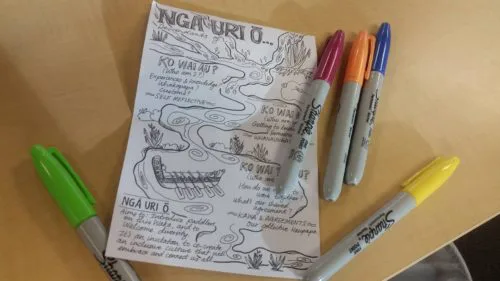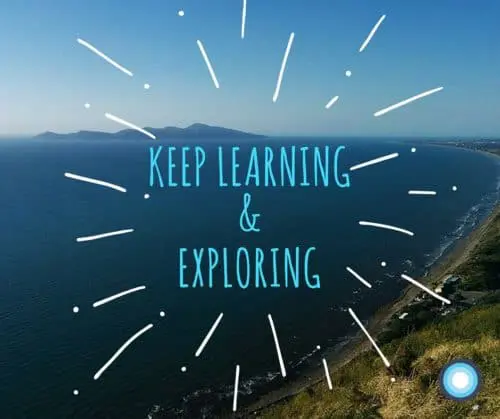Ngā Uri Ō at Design for Social Innovation Symposium 2016
On the 13th of July Lifehack delivered three 10-minute mini workshops at the Design for Social Innovation Symposium hosted at Massey University to share a tool we’re developing called Ngā Uri Ō. It’s a prototype concept to capture the importance of whanaungatanga and allowing space for this when working with others.
It was the first time the prototype was put in front of people—a great way to explore if the concept was relatable, work out what landed with people and what didn’t so we can continue to iterate and develop it further.
Want to know more on Ngā Uri Ō, please read here.

Workshop delivery
The ten minute workshop involved
- An introduction giving participants context to how the concept came to be and also what the purpose of the it was
- talked through the different stages that brings together Ngā Uri Ō
- we did a quick energiser/exercise getting people moving around putting one of Ngā Uri Ō stages into practise
- If there was enough time at the end, I allowed participants to ask questions and offer feedback.
Feedback given
Someone expressed that we should change the word ‘self-reflective’ to a Māori word as they believe it would capture the meaning more deeply. Since then I have looked for a word to replace ‘reflective’ and have found whaiwhakaaro. I will be sharing this word with others to see how people respond to it.
Another piece of feedback received was that there are three clear steps to Ngā Uri Ō: Ko wai au? / Who am I?, Ko wai koe? / Who are you? And Ko wai tātau? / Who are we?. They told me there is a step missing which is ‘who are you in relation to me?. This is great feedback and we will be looking at ways to capture this within the process and exploring this further.
We also had overs give validating feedback around how this was easy to pick up and use and that they will be keeping this in mind when working with people.
Thank you to everyone who took the time to offer their feedback.
Personal insights
Design for Social Innovation Symposium showed Ngā Uri Ō in practise beautifully and allowed me to give examples of the process through their personal experience of being at the symposium.
The powhiri in the morning spoke to the importance of wai / water in Te Ao Māori / the Māori world. I was able to speak about why we have used waterways in the Ngā Uri O. We went outside and the hosts shared with us all the whakapapa of the land to ensure we acknowledged what had gone before us to help us ground in the now and where we were.

There was time at the beginning of the symposium where we turned to the person next to us to introduce ourselves and hear from someone else. This was the Ko wai au? / Who am I? And the Ko wai koe? / Who are you? Steps put into practice. After that we then paired with other pairs to introduce each other in a large group setting. This was Ko wai tātau? / Who are we? To continue on with who are we, we then came back into a large group and talked about some house rules. This allowed us to create a space we wanted to be in collectively.
For me Ngā Uri Ō is actively practised all around in small to large groups. Now it around sharing this knowledge and hearing others journeys and learnings in this area.
NOTE: Whanaungatanga is not a tick the box process and needs to be used with good intentions for the work and people you are working with. Don’t put expectations on this to extract something from people, but see it as a way to create a safe environment for all participants to flourish.
Patai / questions asked
How did you come to know that ⅕ of time together in a programme or workshop context needs to be dedicated to ‘whanaungatanga’ before beginning on the work?
Building trust within a group is essential when working together on a project, programme etc. It allows space to get to know people, their motivations, their whakapapa, their skills and knowledge to create safe spaces for people to bring all themselves forward to work on something collectively. We paid attention and iterated on this across the Lifehack Weekends series in 2014 in particular.
Does the whanaungatanga process need to be all at the beginning?
The foundation work of whanaungatanga definitely needs to be placed at the beginning of the time you are spending together, however you can sprinkle it throughout the time together which can naturally come through the work being done together.
I don’t have time to dedicate ⅕ to this in my work, what do we do then?
Whanaungatanga is an investment. If you dedicate time to this, you may get different outcomes and results. There are many creative ways to explore ways to do this if you don’t have time in person with the group on the day. What can you do in the lead up? Start a discussion group, invite people to reach out and connect with others? Generate an introductory document to circulate around the group? I would invite you to start implementing ways for the group to connect and build their relationships together. Test what works with the work that you do, look at what others do or even reflect on times you have gone through this and what worked and what didn’t. Keep learning and exploring this.

